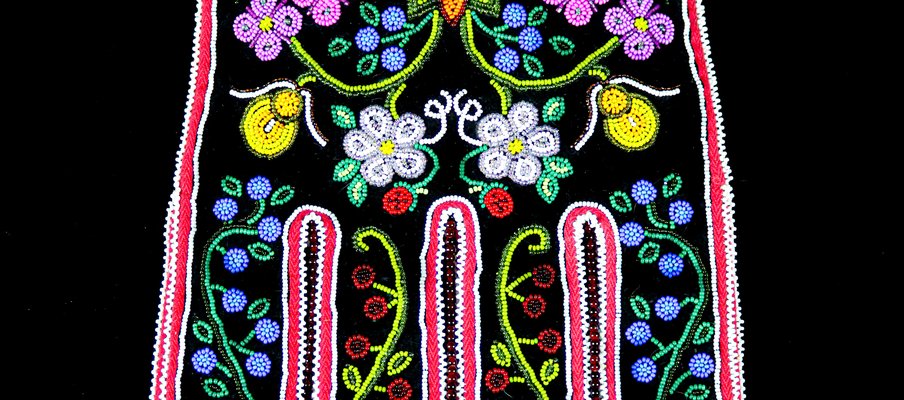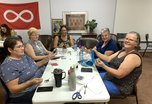Workshop Helps Preserve Métis Traditional Art Form

Related Programs

Beading and storytelling are part of many Indigenous cultures – and are often key to sharing traditions with new generations. This year, Gabriel Dumont Local #11, a Saskatoon Métis organization, offered a new beading workshop to its members, with the aim of sharing stories and reviving a traditional art form.
Cheryl Troupe, member of the Local #11, says the biggest goal of the Sewing Circle: Octopus Bag and Storytelling Workshops was to bring people together to learn how to make these types of traditional bags, because there are not a lot of people still around that make them.
“By making these bags, we are reviving an ageold cultural practice. We wanted to make sure that skill and knowledge was preserved and that people who gained this knowledge could continue to share,” she says adding that the workshop has given 12 Métis beaders and sewers the “skills to make them, a stepbystep guide on how to make them and the history behind the bags.”
Troupe explains that the Métis traditional bag is influenced by Anishinaabe fire bags and are named “Octopus Bags” due to the eight legs hanging at the bottom of each bag.
“Historically, the bags were decorated with beadwork, embroidery or quillwork. They were usually decorated in similar but different patterns, on both sides,” she says. “These were commonly used by Métis men in the 18th and 19th century to carry tinder, flint, tobacco and other necessities.”
The virtual workshop, which ran from February to May in 2021, was supported with funding from the Métis Cultural Development Fund. Participants learned the skills to make these bags, which took at least 300 hours to complete. The training was led by Greg Scofield, a talented beadworker, who is also poet and a storyteller. Scofield shared historic pieces from his personal collection, as well as the history of traditional Octopus Bags, sewing techniques and beading designs. “There were lots of good storytelling and laughter,” says Troupe. “Everybody that was participating shared their own stories about learning to sew or bead from their grandmother, mother or someone in their family. Through sewing, all of those kinds of stories came out.”
Many personal stories were also sewn and beaded into each traditional bag. Troupe says she was thinking about wildflowers she grew up knowing while creating her Octopus Bag.
“Each bag is unique and has its own story. Many of us will teach others and by this, we are rejuvenating this art form,” she says. “We had a member of our Local, who looked at a design that her great grandmother had beaded and incorporated similar designs into her bag.”
The bags created were featured in an arts exhibit at the Batoche National Historic Site and the Motherwell Homestead National Historic Site.
“Everybody was really pleased with their bags. Some were surprised they could do something so elaborate and so beautiful because it was a tremendous amount of work.”




